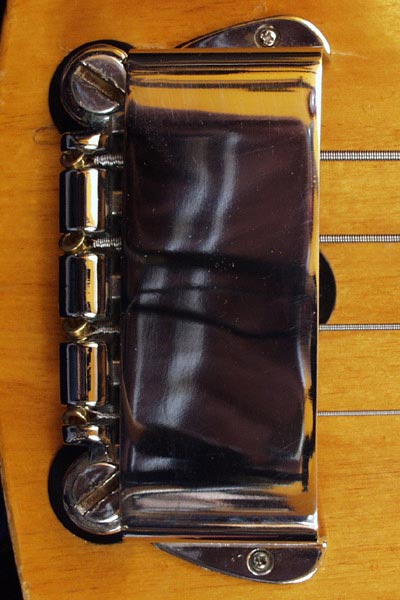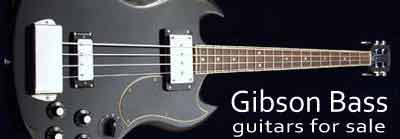• Solid Alder body • set three-piece maple neck • rosewood fretboard • two humbucking pickups • 34 1/2 inch scale
Model: Gibson SB-450 bass
Year: 1973
Serial Number:
Scale: standard long, 34 1/2"
Body: Five-piece alder body, natural finish
Neck: Three-piece maple, set neck. Rosewood fingerboard. Dot position markers
Frets: 20
The upgraded SB series of 1972 onwards kept many structural features of the 1971 models, yet with significant hardware changes. Most notably the pickups were upgraded from single coil units to SB humbuckers, and the lightweight bridge was changed for the Gibson two-point, and later the Gibson three-point (as seen here) used from 1973 to the present day.
In many ways this is a typical early seventies bass. The light body wood (alder) with natural finish was a very popular look of the time - gaining more popularity on different Gibson basses throughout the decade. Notice the volute (on the back of the headstock) and silk-screened Gibson logo in black. This is one of 237 natural SB-450s shipped in 1973 (only 386 natural SB-450s were made compared to 377 cherry and 193 walnut).
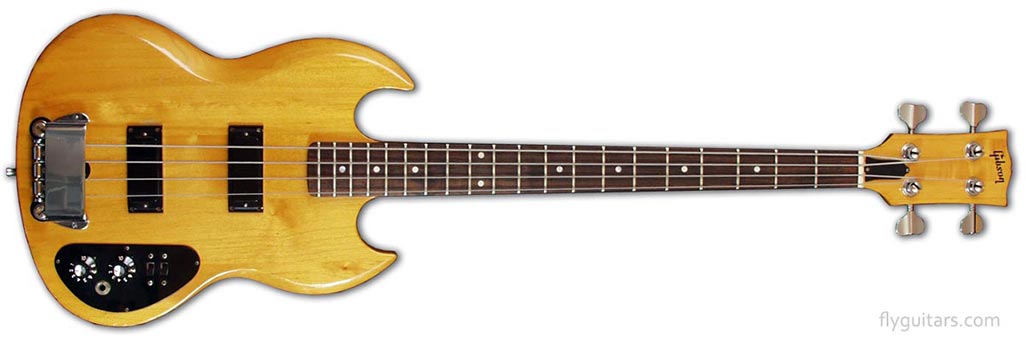
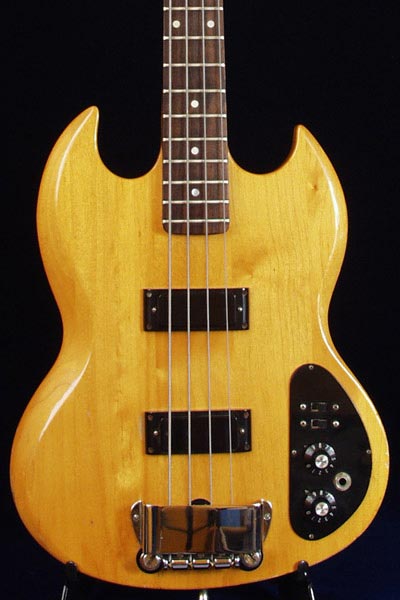
The long-scale SB basses had the same bodies as their short-scale counterparts, but with a slightly longer neck. Note also that the bridge has been repositioned further back along the guitar body, to allow for an increased scale length, without having a too long neck and unbalancing the instrument. The hardware is identical on both long and short scaled instruments.
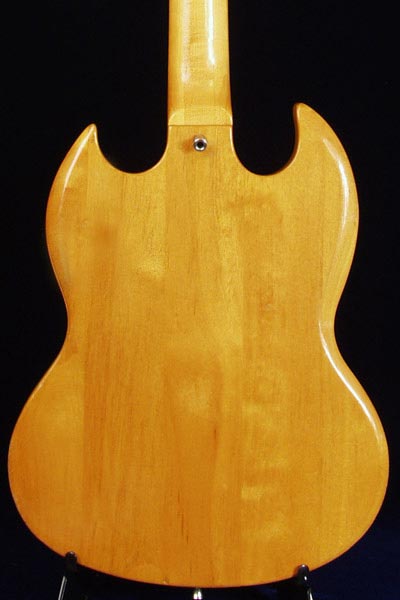
This bass has a five piece alder body, and three-piece maple neck, the different wood sections clearly visible here. As all electrical components are accessible from the front there is no rear control cavity cover, as was the case with EB0, EB3 and EB4 basses of the time.
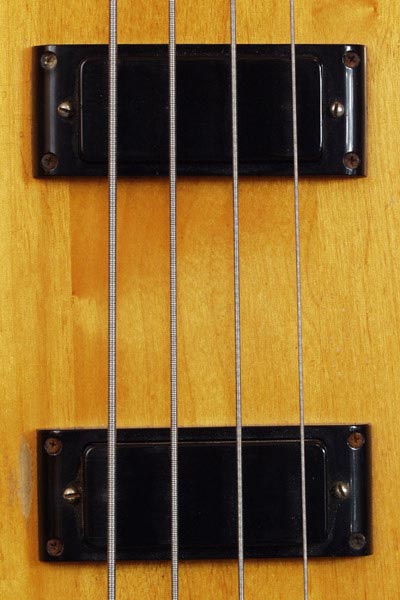
The SB350 and SB450 were fitted with simple
SB humbuckers - as a competitively priced bass, these had to be less expensive parts than the metal-covered versions used on the EB series. They were smaller with black plastic covers and surrounds, but a marked improvement on the
single coil SB pickups used on the SB300/SB400.
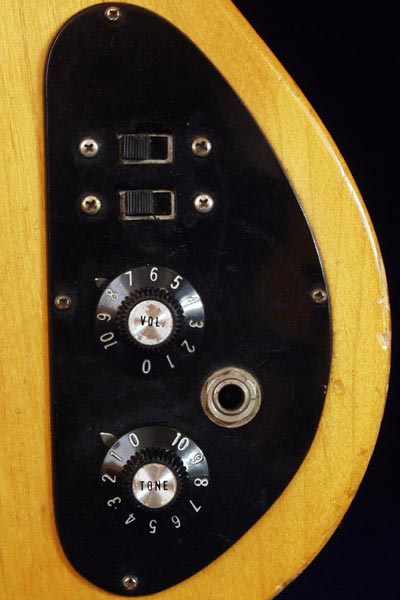
The redesigned SB350/SB450 series from 1972 had the same controls as the earlier SB300/SB400: that is an on/off switch for each pickup, a master volume and tone control and input jack. They were mounted on a plastic rather than metal plate, but still had the witch-hat control knobs.
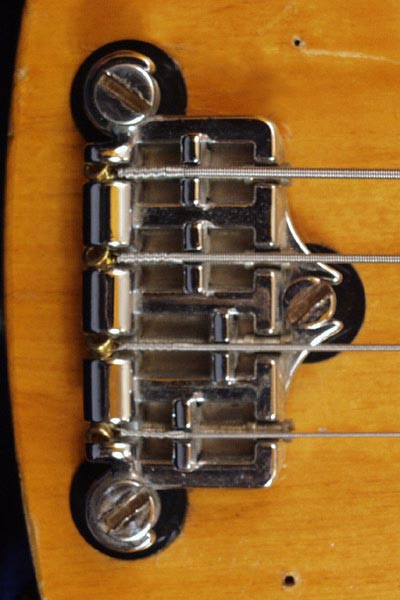
With the cover removed, the metal bridge saddles are in evidence. This SB bass would have been one of the very first Gibson basses to be fitted with the new three-point bridge. Note the black post surrounds - fitted only to the earliest basses to use this bridge.
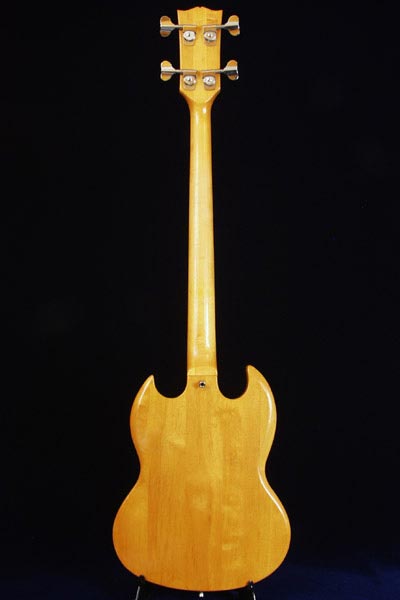
The newly designed for 1972 SB basses were very similar to the EB bass guitars of the time, but rather than a mahogany body and walnut or traditional Gibson cherry finish, they were made from alder, with a natural finish.
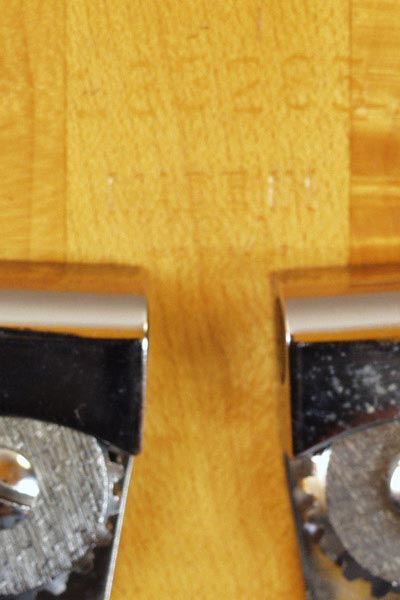
Like all Gibson basses of this period, this SB450 has a six digit serial number stamped to the top back of the headstock, along with MADE IN USA. More about Gibson bass serial numbers
here.
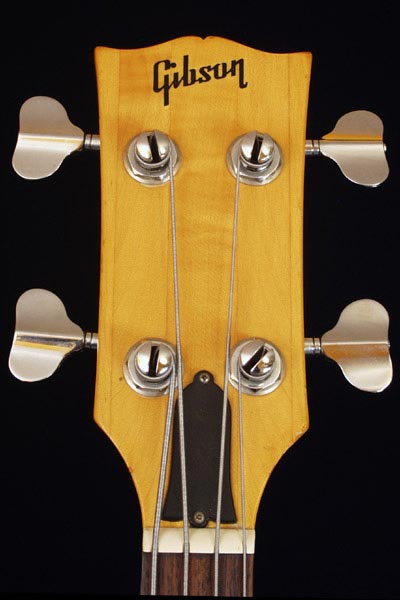
This SB450 headstock has no black-painted veneer and no inlaid logo like most solid-headstock Gibson bass guitars produced prior to this point; another money-saving feature that made little difference to buyers, yet contributed to this American-made bass being kept at a price point comparable to the very many lesser basses made by Gibson's US and overseas competitors. The neck has three-piece construction, with two extra wings on the headstock making five pieces in total. The truss rod cover is also simplified - just plain and single-ply.
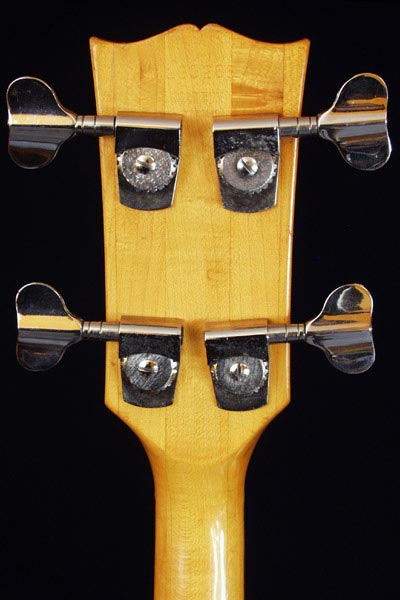
The reverse side of the SB450 headstock. This bass has a three-piece maple neck, with a five piece headstock and, to reduce the likelihood of neck breaks, a volute. The serial number resides at the top of the headstock, above 'made in U.S.A'. Tuning keys are
Schaller M4S.
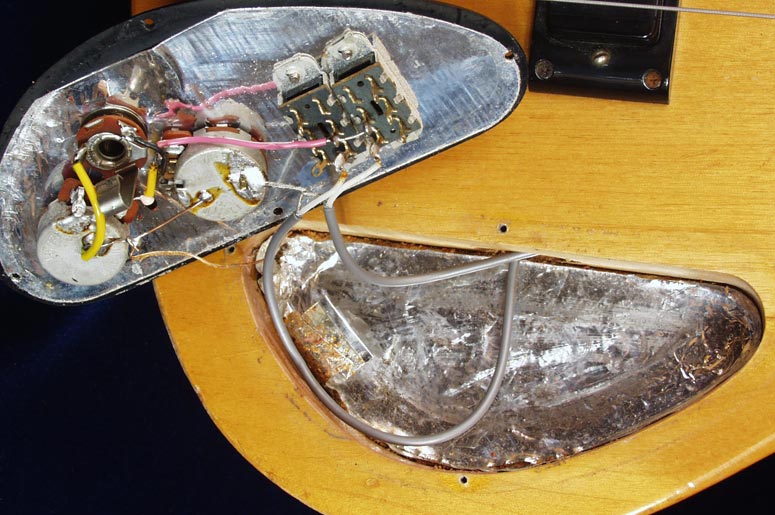
Under the control panel of a Gibson SB450 bass - the controls really are very simple, just an on/off switch for each pickup, and a master volume and tone control.
The SB series was an attempt to create a more affordable bass; perhaps a bad marketing decision by the company renowned for its quality, or perhaps an essential move in the exceptionally difficult market conditions on early/mid 70s America. Less expensive woods combined with less labour-intensive production methods (ie mounting the pre-assembled controls on the plastic plate rather than onto the body itself), saved production costs to allow Gibson to retain higher end features, such as the set neck and weighty three-point bridge. Clearly the public were not especially moved as is attested by the lacklustre sales figures.
Interestingly enough, the 1972 catalog only lists the available finishes as walnut and cherry, which it describes as maple necked with a rosewood fingerboard. The body wood is not specified. 21 natural SB450s were shipped in 1972, and like the example above they had a maple neck, alder body and rosewood fingerboard. This configuration of woods, combined with the longer scale and new SB humbuckers gives an instrument with real punch - far more so than its mahogany bodied cousins in the EB series.



